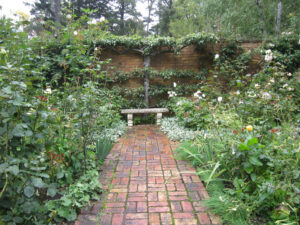Fruit trees – versatile and perennially popular
By John Fitzsimmons
Fruit trees are a perennially popular category and now is the time to finalise orders for mid-year deliveries.
“Edibles” has been a highly active and growing category over recent years and shows little sign of slowing down. While the focus has been heavily on annuals, within that group is a sub-category that is perennially popular – fruit trees.
When house blocks and gardens were larger almost everyone had at least one or two fruit trees. Some would even be called real enthusiasts, having many types and varieties. Then, as life became more complex and domestic growing spaces shrank, many people left it to commercial growers to meet their needs who have undergone their own revolution with regard to rootstocks, genetics, and tree and orchard management, to now attain yields of sixty tonnes per hectare of apples or more in some situations.
Meanwhile, back on the domestic-consumer front, pandemics and lockdowns spawned a major revival in home food production. Even when the economics weren’t favourable, there were benefits for mental health, landscapes and the environment derived from this newfound enthusiasm, and it’s further helped by the visual and taste appeal of fresh home-grown herbs, fruit and vegetables – especially fruits.

With the contemporary situation often seeing growing spaces more confined and limited, it was only natural that compact or dwarf varietal selections should increase in popularity. Even the online offerings of specialist propagators such as JFT Nurseries are mouth-watering. Pome fruits, stone fruits, nuts, berries, figs, kiwi fruit – it’s all there, from apples to pomegranates, apricots to quinces and interspecific trees.
Dwarf options are very well represented, especially in pome and stone fruits – apples and pears, apricots, peaches and plums. For example, the dwarf apricot selections ‘Bulida’, ‘Divinity’, ‘Fireball’ and ‘Storeys’ (‘Early Moorpark’) usually grow to just 2m x 2m but can also be espaliered.
Multi-grafted lines double (or triple) the opportunities.
Even where pollinators might be needed for fruiting, JFT suggests planting two trees in the one hole, each on their own matched rootstock. This negates the chance of the ‘stronger’ variety producing priority expression over the other, which can be seen in some multi-grafted combinations.
Nut trees, especially hazelnuts and chestnuts, are always popular although walnuts might be in shorter supply this year.
Given increasingly confined growing spaces, the accompanying rise in espaliered fruits is not at all surprising. Whether it’s just a smaller footprint that is available or needed, or a less desirable background that needs screening, espalier is the genius answer. It can also be used to screen off different ‘rooms’ in the garden – drawing people in to new perspectives and discoveries. This can also introduce warm and cool zones, and shade variations.
Established espalier specialist, Merrywood’s Chris England says using citrus is a ‘no brainer’. They can’t keep up with demand for Tahitian lime – and apples are a sell-out.
He also reports stock of espaliered olives is all but zero, while he has noted an increase in demand for non- or low-fruiting varieties like ‘Tolley’s Upright’. A relatively slow grower, it responds well to pruning and can be grown with a single leader or easily pruned into a hedge for screening.
In Victoria, after an extended wet and cold winter, growers are now getting back on track for mid-2023 deliveries as orders are finalised and seasonal demand patterns clarify. Time is running out, so talk to your fruit tree suppliers soon and lock supply in to meet what presents as continuing strong demand.
Main photo: Espalier can screen out less desirable backgrounds, create new vistas and ‘rooms’ in the landscape (Image: Merrywood Plants)

